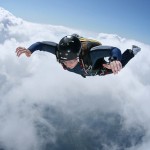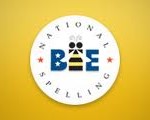From READER’S DIGEST, Dec. 2010 – Quinton Gordon photograph
Today was a big day, I’d reminded my daughter. Right after kindergarten we had a date. “Rick’s taking us fishing. He’ll teach us about fish.”
Madeline, who is five, looked unmoved.
“I already know everything about fish,” she said.
“You do?”
“Yup.”
“What do you know about fish?”
“They need to eat to stay strong, and they need to be wet to stay alive. They swim with their mouth open so they never get thirsty.”
It wasn’t a bad start.
“Rick” is Rick Hansen, the renowned wheelchair athlete who, outside of his charity work, happens to know everything — or close to everything — about one particular fish. Hansen is director of the Fraser River Sturgeon Conservation Society. And as he loomed into view through a misty rain, from the deck of his boat bobbing at the public wharf in Steveston, B.C., she recognized him as the “man in motion” guy in one of her kids’ books.
Madeline had never really been fishing. Oh, I’d taken her to the Father’s Day derby at nearby Rice Lake, where about a million little kids lily-dip their lines in hopes of snagging one of the timid little trout in there. But this was something else. White sturgeon are a species so big and old and storied that catching one is almost as much of a life-changing experience as tagging it and putting it back—even for adults. The sturgeon that swim in the Fraser today are evolutionarily unchanged from the ones that swam before the ice age before the last ice age. No joke: we were going fishing for dinosaurs.
His folded wheelchair tucked between the seats, face flush with the pleasure of being out of the office, Hansen throttled up and we nosed out of port. The wind, here in the estuary, carried the tang of sea salt. The working river was doing double-time – seiners schlepping their heavy nets, tugs towing barges of sawdust, a crane lowering a tankerload of cars from Asia onto the dock. None of this interested Madeline much. Look, there were two TVs on board! When it became sadly clear that neither was going to pick up Babar, she tuned in to Rick’s explanation. One screen mapped where we were. The other was a fishfinder. “In the old days you used to be able to say, well the fish just weren’t around,” Rick said. “Now you have to admit, we just weren’t smart enough to catch them.”
Madeline sat on my lap. I could feel the warmth of her right through the yellow rubber rain pants. It was kind of blissful. To busy parents of little kids, life too often seems like a string of teachable moments squandered. By the time we realize what we should have said to help decode their wonder and give it a name, the door has slammed shut. But a day spent fishing for sturgeon is one long master-class in pretty much everything that’s important to know. The teaching goes both ways. Adults make fishing complicated, but a kid’s appreciation of it—as of most things—is big-picture simple. Today we would learn not how different a prehistoric fish is from a five-year-old girl, but how similar.
“What do you think sturgeon like to eat?” I’d queried on the drive south through Vancouver. “Worms,” Madeline said, definitively. Turned out she was right: many a novice fisherman casually dangling an earthwormed hook into the Fraser has had a near heart attack when a sturgeon the size of a dancer’s leg takes that bait. But there are things a sturgeon likes even more. Fred Helmer, a veteran BC fishing guide who was along with us, had prepared four rods—including one for Madeline and one for me. And now as we dropped anchor in Rick’s secret favorite spot near the Alex Fraser Bridge, he cast the hooks in and they sank without bubbles. On the menu today was choice pink-salmon parts and —the special of the day — a syrupy clump of skein roe that Fred called “magic bait.” These are protein-rich eggs harvested from a mama pink salmon just preparing to spawn: superpremium catnip.
Fred held his hands a foot or so apart. “How big is the fish you’re going to catch?” Madeline shook her head. He went wider. “This big?” Madeline knew exactly how big. In her kid logic, a successful fishing outing is one in which you land a fish that would fit your clothes. Madeline’s sturgeon, by that reasoning, was going to be 109 centimetres long– three foot seven. Mine would be 175 centimetres—five foot nine.
What’s cool about sturgeon fishing, though, is that it’s not about size. Every fish has equal merit. Nobody would be taking a sturgeon home for dinner tonight. Earlier this century they were fished almost to extinction—twice—and while their numbers recover, the white sturgeon of the Lower Fraser are protected. But this is more than a catch-and-release enterprise: it’s catch-and-tag-and-release. Sturgeon fisherman are tracking the population: where they’re going, how they’re growing, how many of them are out there — and data on the juveniles is just as valuable as data on the old soldiers. To fish for sturgeon is to be an adjunct scientist. Everyone who catches a sturgeon becomes part of the conservation effort, and in this sense a five-year-old’s contribution is as valuable as any biologist’s.
An hour of fishing under the bridge yielded but one tiny sculpin, which Madeline took great joy in setting free. But now the tide had turned. The rising sea was pushing boats upriver, giving the Fraser the appearance that it was running backwards. We were entering a dreamscape where the normal laws of physics were suspended.
The scent of that gorgeous bait was carrying on the current. For the fish, the wind had just picked up outside a bakery.
Madeline’s rod-tip twitched, subtly. Rick took the rod gently, reefed up hard on it, once, then handed it to me. A fish was on.
It felt big. Or at least mad. I struggled to keep too much line from peeling off the reel. “So, Rick has a couple of rules,” Fred said. “You cannot let go of the rod no matter what. If you do go over the side, hang on to the rod and we will come and get you.”
For some long minutes the tug-of-war continued. Then out of the brackish depths of the Fraser it came, Madeline’s sturgeon, tigerish stripes on its back visible first, then the sharklike head and the flicking tail defining the two ends, establishing its size. I had been trying to stay strong for Madeline—the great stoic hunter little girls expect their dads to be—but my arms were blasted. I was shaking and frankly not too far from tears.
“What’s the most humane thing to do with this fella?” I croaked as we brought him alongside.
“Just keep him in the water, relaxed,” Rick said. “We have to set up.”
The fish was still. “Is he dead?” Madeline asked.
“No, Sweetie. He’s had better days. But he’ll be fine.”
Fred guided Madeline’s sturgeon into a hammock-like sling in the water, which Rick then winched up into the boat. Madeline put on gloves. She came up to her fish. It seemed less like a fish than some kind of farm animal with body armour. Something in a medieval petting zoo. We watched the gills opening and closing, flashes of crimson beneath. Was it suffering?
“Sturgeon aren’t like some other fish, where after five minutes out of the water they’re done,” Rick said. “They are incredibly hardy.”
“Back in the day when you could catch and keep sturgeon, my dad would store them on the lawn, for three or four days, with the sprinkler on them – and then go sell them in Chinatown,” Fred said.
“Here’s the mouth—see how leathery it is? Look how it comes out – like a vacuum hose. And these things on its nose are chemical sensors for detecting prey.”
Rick turned in his chair. “They have the ability to locate food that’s way more sophisticated than ours, using vibrations,” he said. Madeline, who sometimes has trouble locating the snacks in her backpack, stroked her sturgeon, its sandpapery skin, incredibly gently.
I picked her up and held her, lengthwise, over top of her sturgeon. It was her size. A measurement confirmed it – within a centimeter. It was probably a few years older. Fred produced an instrument, like the little retail-store gun that scans the barcode tags, and passed it over the fish. BEEP! A microchip under the fish’s skin sent a signal, and a number popped up in the scanner viewscreen.
The fish had been caught once before – on November 22, 2006. Since that day, we would learn, the fish had grown nine centimeters in length but only one in girth – taller but not much fatter. Like Madeline herself. I had a flashback to St. Paul’s hospital, our daughter emerging grey-pink and slimy and a doctor moving her under a warm light and producing a tape measure. Madeline stuck out beyond the last mark, off the charts. “Our child cannot be measured by science!”)
“You can check on your fish once a year,” Rick told Madeline. Thousands of BC schoolkids, from grade two to grade seven, are monitoring the sturgeon stocks by following the stories of individual fish like this one.
As Madeline’s fish rested in the sling, a second sturgeon was brought aboard. This time the scan was beepless. So: a new capture. This fish had never been above water. Fred loaded a little glass tag the size of a grain of rice into what looked like a hypodermic needle.
“I’ll try not to get this needle in my hand—that has happened before,” Fred said. “Now, Madeline, we put the tag right under the surface of his skin, so when the fish grows the tag can move around in his body.”
We tipped both fish toward the river and they slipped in, headfirst. I thought, romantically, that Madeline’s fish might look back at her before swimming away, but it didn’t. Madeline asked to be picked up. She was dead weight. I had the notion that she was drained of energy in sympathy with her exhausted fish. (Or, less likely, in sympathy with her exhausted dad.) Probably it was just a perfect storm of a couple of late nights, fresh air and a glucose crash from the nut bars.
But clearly, this was all almost too much for her to process. She didn’t have the language for it.
I wondered what new fears we had introduced on this trip. The idea of a whole teeming subsurface world: monsters under the bed. Her fish had been brought up gasping into the air. It looked bad, but it really wasn’t, we insisted. Did she buy it? (You could see her searching for the right analogy and later she found it. “How would you like to be holded under water?”) A million mind-blowing factoids swirled: Dinosaurs are real. Dads are weaker than they let on. And the people we read about in books might one day step out of those books and take us fishing.
She had been a motormouth on the car ride over. From the back seat issued strong opinions on how Beethoven lived in China, how things were better in the days when dads like me weren’t underfoot and moms played with kids and gave them treats. (Also: could she have a horse?) But now she was silent. I looked down at her in my arms. She was asleep.
You can guess how the rest of the story goes. Kid logic prevailed. The sun broke through. Soon after my own fishing rod twitched with a bite. After a monumental struggle that ensured I’d be sleeping with a heating pad for days, I brought this last fish in. Madeline was awake now, saucer-eyed, trying to get close without getting in the way. Fred’s hand got raked by the pointy scutes and was trailing blood as he scanned it.
This fish was monstrous. It measured 93 centimetres around, its belly probably full of pink salmon. It was between sixty and eighty years old – the age of grandpas and grandmas. Now it was going back. With great luck it will still be here a generation from now, and maybe Madeline will catch it again with her own five-year-old son or daughter on a fine fall day like this one.
But there was one thing that didn’t square. Madeline’s fish was Madeline-sized. Mine was supposed to be my dad-sized: that was what she’d ordered. We measured it. From its nose to the tip of its tail it was around 215 centimetres. Madeline leaned close.
“That’s you?” she said.
I shook my head. “It’s taller.”
Then it clicked.
“That’s you on my shoulders.”







